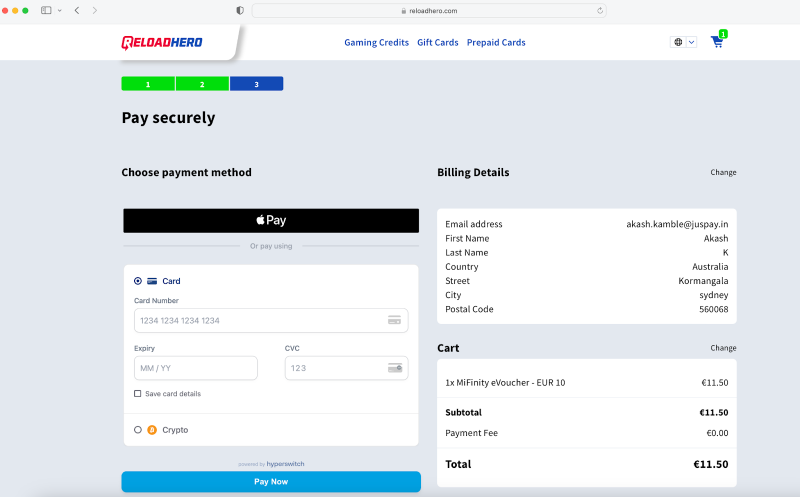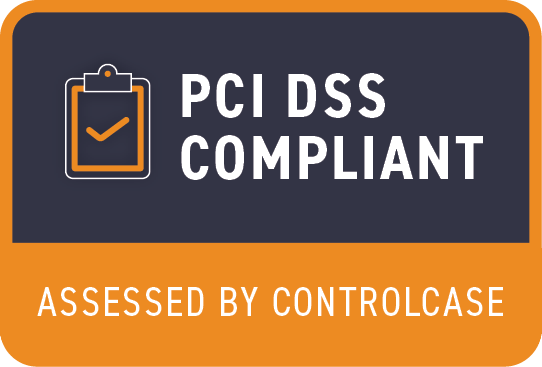In the ever-evolving world of e-commerce, one of the critical elements to consider is the checkout process. It's the make-or-break moment where your customers decide whether or not to complete their purchase. To optimize this crucial phase, you need to decide between two primary options: prebuilt checkout pages and embedded checkout pages. Each has its own set of advantages and disadvantages, and in this blog post, we'll explore the differences, factors to consider when making your choice, and more.
Introduction: What is a Hosted Checkout Page?
Before we dive into the intricacies of prebuilt and embedded checkout pages, let's first establish a clear understanding of what a hosted checkout page is.
A hosted payment page is an externally hosted webpage that accepts online payments on behalf of the merchants. Instead of integrating a payment gateway / processor themselves, merchants can use a hosted payment page provided by a third party Payment Service Provider (PSP) and thereby reduce their overhead. A hosted payment page has its benefits and constraints. Depending on the business needs for flexibility, scalability and control, merchants choose between a hosted payment page and integrating a payment gateway. For more information, you can read our blog on Hosted Checkout Page.
Now, let's delve into the key differences between prebuilt and embedded checkout pages.
Difference Between Prebuilt Checkout Pages and Embedded Ones
Prebuilt Checkout Pages
Prebuilt checkout pages, as the name suggests, are ready-made checkout solutions offered by payment gateway providers or e-commerce platforms. These pages come with a predefined design and functionality, making them quick and easy to implement. Here are some pros and cons of using prebuilt checkout pages:
Pros:
- Speedy Implementation: Prebuilt checkout pages can be integrated into your website relatively quickly, saving you time and effort.
- Security: Payment gateway providers often prioritize security, ensuring that your customers' sensitive data is protected.
- User-Friendly: These pages are typically designed with a user-friendly interface, reducing cart abandonment rates.
- Updates and Maintenance: The responsibility for updates and maintenance usually falls on the payment gateway provider, relieving you of this burden.
Cons:
- Limited Customization: Prebuilt checkout pages may have limited customization options, making it challenging to match your brand's aesthetic perfectly.
- Reduced Control: You have less control over the entire checkout experience, potentially affecting your ability to optimize for conversions.

Embedded Checkout Pages
Embedded checkout pages, on the other hand, are integrated directly into your website, offering a seamless and consistent user experience. These are usually more customizable but require additional development effort. Let's explore the advantages and disadvantages of embedded checkout pages:
Pros:
- Customization: You have complete control over the design and functionality of the checkout process, allowing you to align it with your brand's identity.
- Enhanced User Experience: An embedded checkout page provides a seamless and familiar experience for your customers, reducing friction.
- Conversion Optimization: You can A/B test and fine-tune the checkout process to maximize conversions, as you have full control.
Cons:
- Development Effort: Implementing an embedded checkout page requires more time and resources, including web development skills.
- Security Concerns: Ensuring the security of embedded checkout pages is your responsibility, which can be a complex task.
- Maintenance: Ongoing maintenance and updates can be more time-consuming when compared to prebuilt solutions.

Factors to Consider in Making the Choice
Now that we've explored the fundamental differences between prebuilt and embedded checkout pages, let's delve into the factors you should consider when making your decision. Your choice should align with the nature of your business, development capabilities, customer conversion goals, cost considerations, and your desire for control over the payment experience.
- Nature of Business: Consider the nature of your e-commerce business. Are you a small startup or a large enterprise? Smaller businesses may benefit from the convenience of prebuilt solutions, while larger enterprises may prioritize customization and control.
- Development Effort: Assess your development resources and capabilities. If you have a skilled development team and want full control over the checkout process, embedded pages may be the way to go. However, if resources are limited, prebuilt solutions offer a quicker path to implementation.
- Customer Conversion: Optimizing your conversion rates is critical in e-commerce. If you have specific conversion goals and want to experiment with different checkout processes, embedded pages offer more flexibility. Prebuilt pages may limit your ability to fine-tune the user experience.
- Cost: Consider your budget constraints. Prebuilt checkout pages often come with subscription fees or transaction costs, while embedded solutions may have higher initial development costs. Calculate which option makes more financial sense in the long run.
- Control Over Payment Experience:
Think about how much control you want over the payment experience. If branding and user experience are paramount, embedded checkout pages give you the freedom to create a seamless flow that aligns with your brand.
FAQ
- Can I customize prebuilt checkout pages to match my brand?
Yes, many payment gateway providers allow some level of customization. However, the extent of customization may be limited compared to embedded pages. - Are embedded checkout pages always more secure?
Not necessarily. While embedded pages offer more control over security measures, prebuilt solutions from reputable providers often come with robust security features. - Can I switch from prebuilt to embedded checkout pages later on?
Yes, it's possible to make the switch, but it may require some development work to integrate embedded pages into your existing website.
Choosing between prebuilt and embedded checkout pages is an important decision for your e-commerce business. Each option has its own set of advantages and disadvantages, and the choice should align with your specific needs, resources, and goals.
Prebuilt checkout pages are convenient, secure, and quick to implement but may offer limited customization and control. Embedded checkout pages on the other hand, provide maximum customization and control but require more development effort and maintenance.








